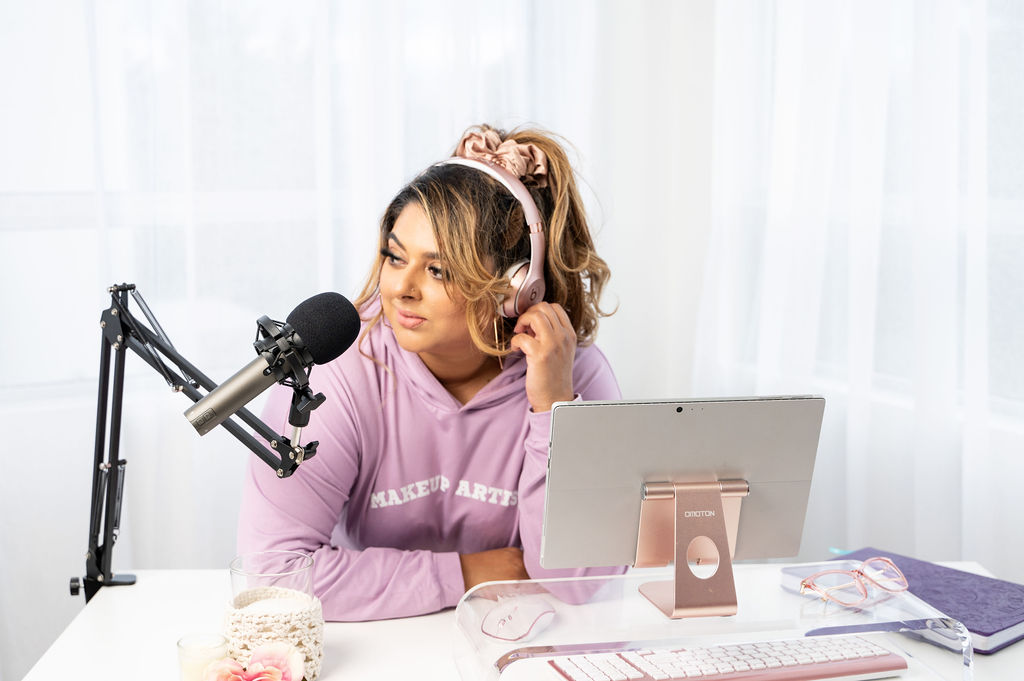In part two of our deep dive with Cheryl Peng from Untamed Artistry, we continue our chat about lash adhesive and retention issues, along with some seriously helpful insights on how to master your lash environment. If you missed it, go back and check out Part 1: Troubleshooting Your Lash Adhesive. Cheryl shared so much wisdom about the science behind lash adhesives, how she transitioned into the lash industry, and her decision-making process that helped shape her into the successful businesswoman she is today.
But now, let’s dive back in!
Lash Retention 101: Troubleshooting Your Lash Adhesive – Part 2/2 with Cheryl Peng of Untamed Artistry
In this episode, we focus on troubleshooting retention issues that every lash artist encounters at some point, along with how to master your lash environment for optimal adhesive performance. Let’s break it down:
What Lash Artists Need to Know About Adhesives and Retention
One of the biggest pain points in the lash industry is retention, and much of that comes down to understanding how adhesives really work. Cheryl explains that Ethyl Cyanoacrylate, the main ingredient in lash adhesives, is essentially a liquid plastic that hardens when exposed to moisture. This is why humidity and temperature in your studio are critical when working with lash extensions.
But here’s a huge takeaway: oil doesn’t affect lash retention. That’s right, oils, makeup, and even skincare products don’t directly cause lash extensions to fall off, contrary to popular belief. Instead, it’s often the lash prep and adhesive application that play a larger role in retention issues.
Preparing Lashes for Better Retention: The Three-Point System
Before we dive into applying lashes, proper lash prep is absolutely essential. Cheryl stresses the importance of a three-point system for lash preparation:
- Squeaky Clean Lashes: Make sure the lashes are properly cleansed before applying any adhesive. Oils, dirt, and makeup residue can all compromise retention.
- Non-Alcohol-Based Primers: Many artists default to alcohol-based primers, but Cheryl suggests using a non-alcohol-based primer that can open up the cuticles of the natural lash. This allows the adhesive to form a stronger bond by maximizing contact with the natural lash.
- Adequate Moisture: Adhesive needs moisture to set. If the natural lash is too dry (from over-priming or environmental conditions), the adhesive takes longer to cure, which can lead to poor retention.
Why Proper Application Is Everything
If there’s one takeaway from this episode, it’s that application is everything. Cheryl explains that even if your clients are using oils or applying makeup, good application techniques can safeguard retention. Proper application creates a maximum point of contact between the extension and the natural lash, which helps the lashes withstand wear and tear, regardless of external factors.
For example, when applying a classic 8mm lash on a 6mm natural lash, you need to ensure that at least 5mm of the natural lash is covered with adhesive to ensure the extension is securely bonded. The more contact, the better the retention.
Working with Curled Lashes: Maximizing Adhesive Contact
When working with lashes that have a D-curl, Cheryl emphasizes that the best way to ensure optimal retention is to apply the extension from underneath the lash. By doing this, you leverage the curl to create better contact with the natural lash, ensuring a stronger bond and longer retention.
Why Oil Isn’t the Enemy
A lot of lash artists (and clients) blame oils or oily skincare products for retention issues. Cheryl explains that this is largely due to confirmation bias. Sure, oils can compromise poor application, but they don’t cause retention issues on their own. If there’s a gap in the adhesive bond, oil and everyday friction (like blinking or rubbing the eyes) can loosen the lash and cause it to fall out.
The real culprit? Poor application techniques that leave gaps between the natural lash and the extension.
Managing Your Lash Environment: The Importance of Humidity and Temperature
Your lash adhesive is your “worker,” and like any good worker, it needs the right conditions to perform well. Here are a few tips for managing your lash environment to maximize retention:
- Amount of Adhesive: Too much adhesive will take longer to dry, while too little adhesive won’t bond the extension properly. Find the sweet spot by experimenting with different amounts.
- Humidity Levels: Adhesive performs best in environments with the right balance of humidity and temperature. Too much humidity can cause the adhesive to cure too quickly, while too little humidity can extend curing times and cause retention issues.
- Feedback Loop: Be mindful of how your adhesive reacts to different environmental factors. If you notice that the adhesive is curing too fast or too slow, adjust your humidity and temperature settings accordingly. This “feedback loop” is essential for understanding your adhesive and troubleshooting retention issues.
Listener Submitted Questions Answered by Cheryl
In this episode, Cheryl also answers some listener-submitted questions that are super helpful for lash artists dealing with common issues in the studio:
1. What happens when lashes aren’t sticking or are sliding off? This is usually a result of poor lash preparation or not enough adhesive. Make sure the natural lash cuticles are open and that you’re using the right amount of adhesive.
2. What should I do if lashes are popping off? This could mean that you’re not using enough adhesive or that the adhesive is drying too fast. Try adjusting your humidity or using more adhesive to ensure a proper bond.
3. What causes fans to collapse or lashes to stick together? This often happens when there’s too much adhesive or not enough moisture in the air. Using less adhesive or increasing the humidity in your studio can help.
Prevent Retention Issues: Practical Tips from Cheryl
- Brush Lashes During the Service: Brushing the lashes throughout the service helps ensure they’re bonding properly and aren’t sticking together. Cheryl recommends brushing every 10 to 15 minutes.
- Use a Nanomister: A nanomister can reduce the likelihood of an allergic reaction and help the adhesive cure faster by adding moisture to the environment.
- Educate Clients on Aftercare: One of the biggest factors in retention is how clients care for their lashes after the service. Educate them on the importance of proper cleaning and maintenance to avoid premature lash loss.
Final Thoughts from Cheryl Peng
When it comes to lash retention and adhesive troubleshooting, it’s all about trial, error, and fine-tuning your environment. Cheryl’s biggest piece of advice? Don’t be afraid to experiment and observe how your adhesive behaves in different conditions. Mastering the art of lash retention takes time, patience, and a willingness to learn.
Check out more of Cheryl Peng:
- Untamed Artistry’s Free Know Your Adhesive Webinar
- UA Free Volume Lash Training
- Lashcast’s Adhesive Course
- Some of our favorite UA commercials:
Special Offer: Get a 30-Day Trial of Lash Assist using the code LASHPRO at Lash Assist Pro
Free Download: Lash Retention Cheat Sheet






